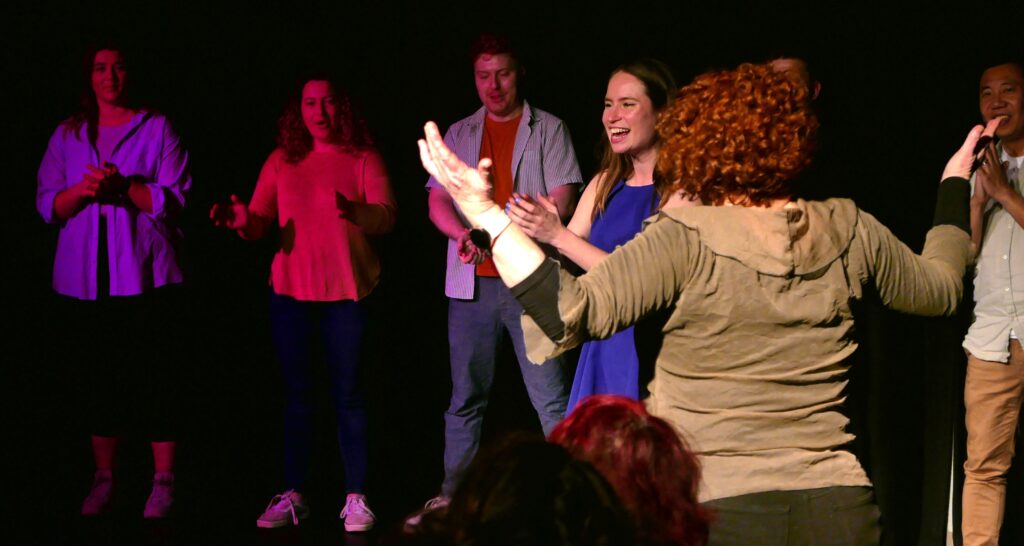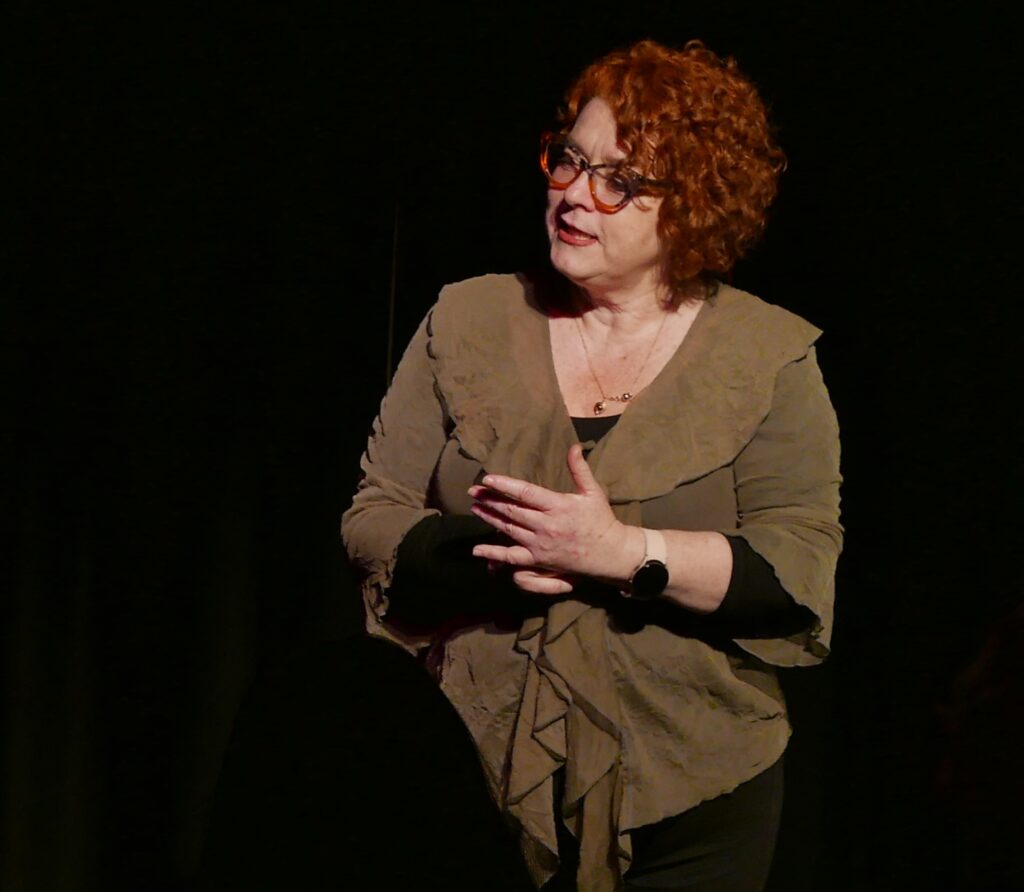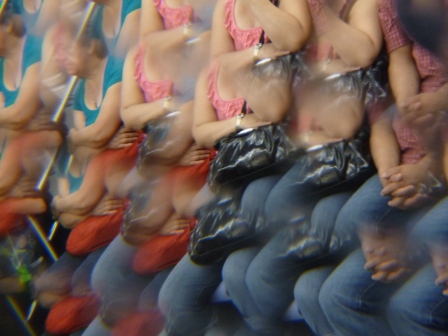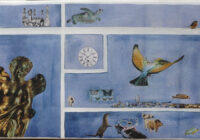so this is a summary of day one of week four. things got too busy to write up every night – as the end of the intensive approaches my class is going out more and more together, seeing 3 shows a night, and then feeling exhausted.
week four was intense. our teacher was lyndsay hailey, who had a new perspective on the harold for me. Essentially her thesis is that the last thing said is the most important, and that is true for the organic/harold games as well. in which case she suggests at the end of the organic the last thing said should be a statement of a single theme.
by making the theme clear (e.g. life is short), then the first 3 scenes become easy to theme (for, against or exploring the thesis).
then the game slot should pretty much begin where the opening left off, and deepen into the theme (e.g. if the opening took the suggestion brown and ended up charting the digestive system and we ended up with life is short, then the game after the first beats should take up the digestive system and go deeper to find the next “theme” for the 2nd beats, e.g. move from the digestive system to the other organs, ending up with a theme that the heart is resilient). Similarly, the 2nd game slot should do that.
it gives a clear path for the beats to evolve through and is really a “conversation with the audience” (which is a del close idea – the suggestion is what they give us, and then we have a conversation with them which converts any idea into brilliance and poetry.
ideas around openings and game slots
- game slots were originally short form games to “guarantee” a laugh between the more serious beats. then they found out that the serious beats were often just as funny
- the harolds in chicago at io are generally 25 minutes, but there is nothing inherent in the form that determines this – they were originally 45 minutes
- opening should be artful and poetic finding a deep theme. good teams have a single theme, wihch they all jump on board with, bad teams have 12 themes
- need to think of the suggestion in light of the first offer, but the last thing said is always the most important, so if the person who speaks or moves or makes an offer before you takes it away from the suggestion, then it’s away from there
- invocation is the training wheels exercise to take suggestions from literal to artistic
-
ideas around themes
- iO is the home of selfless improv – if we have competitive interests and competing themes, because we want our idea to win, we end up with a fractured point of view
- piece before form – if the piece is better served by breaking the form, then break the form
- our job is to make people think before they laugh (on one level it says to the audience, i’m going to take your crappy suggestion of dildo, and make it art)
- if you think the theme is the circle of life, then it’s good to say it (protect your friends by saying “man, the circle of life is a beautiful thing”); repeat the theme as you sweep each scene if you want to – it’s your thesis statement for the overall piece, and everyone knows it, including the audience
armando ideas
- armando: the unspoken rule is to take the question and intentionally get real and vulnerable – the comedy comes in the scenes: comedy as relief of tension (monologue creates ‘seriousness’ tension)
- opening lines of a beat may all be the same (e.g. I’m really disappointed…) if the theme is disappointed
ideas on the harold
- the goal of our group is to extract one clear theme and care about it
- don’t bring scenes together until the 3rd beat
- 2nd beat game slot: this isn’t just happening, it’s got to be important, it has to progress the theme in some way
- character can live anywhere (if character is point of view, then it doesn’t matter if you’re a librarian or a cop or a viking).
- it gets funnier when you pick up patterns and get more specific – digging deep on a single theme is funnier than going broad over several themes
- get character with a clear point of view
- just chase the last thing said by anyone else – you’ll be on theme
- you don’t need to know where you are, just follow what others do
- it’s like when you have terrible sunburn – you seem to get slapped on the back more often – the theme is there, the energy is there, you’ll find it, even if you don’t consciously know
- chase the most interesting shiny thing about the scene – if you have an idea you think would be fun, follow it – remember there is the rest of the troupe and some of them are following (and if they’re not, then they’ll appreciate a strong fun move from you)
- ben stiller movies: primed to laugh because of the pain
- you can’t control
- embarassing moments are huge today’s the day moments
- you can’t control plot, but don’t resist what you know – bring your own life story on stage





